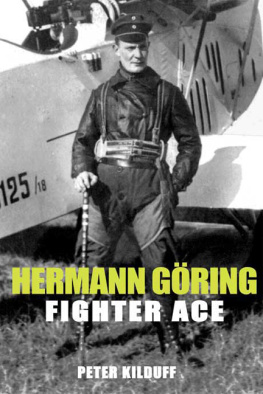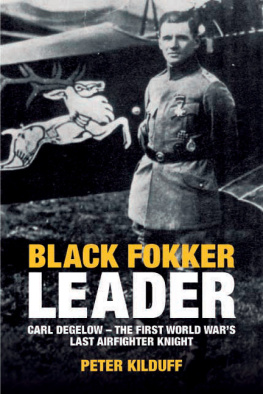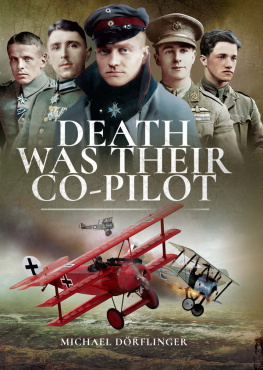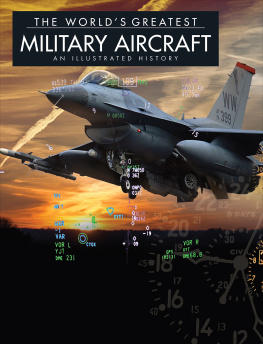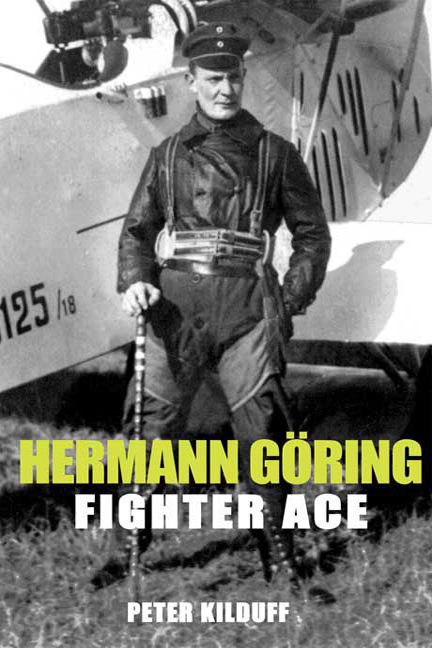A PPENDIX I
V ICTORY L IST OF H ERMANN G RING AND HIS S QUADRON C OMRADES
Author's note: To view Hermann Grings air combat triumphs within an organisational context, the following list of aerial victories scored by him and his comrades when he was assigned to his four air units (prior to assuming overall command of Jagdgeschwader I) was compiled from the official Nachrichtenblatt der deutschen Luftstreitkrfte weekly news and intelligence summary, various Kommandeur der Flieger bi-monthly, weekly and other reports, resources from the former Reichsarchiv and research material provided by the late Dr. Gustav Bock. Comparable British and French reports provided potentially corresponding casualty and other information. Dates are stated in the German numerical style (day, month) and times are expressed in military time, with chronological subheadings to clarify whether the local time was an hour ahead of British/French time, or matched it. Airfields used by the air units to which Gring was assigned at the time of the victories are also noted, to indicate their proximity to the air combat sites noted. In cases of two-seater casualties, pilots are listed first, observers second. Fates of the airmen are indicated by the abbreviations: DoW = Died of Wounds; KiA = Killed in Action; PoW = Prisoner of War; WiA = Wounded in Action. Otherwise, it is assumed the airman was uninjured and returned to his own unit. Aerial victories claimed, but not confirmed are indicated by n/c, and aircraft Forced to Land (which may have been credited as victories) are identified by FtL. During most of Grings time with Jasta 27, the overall Staffel victory numbers were recorded and listed after individual numbers at times even when some victories were not confirmed officially.

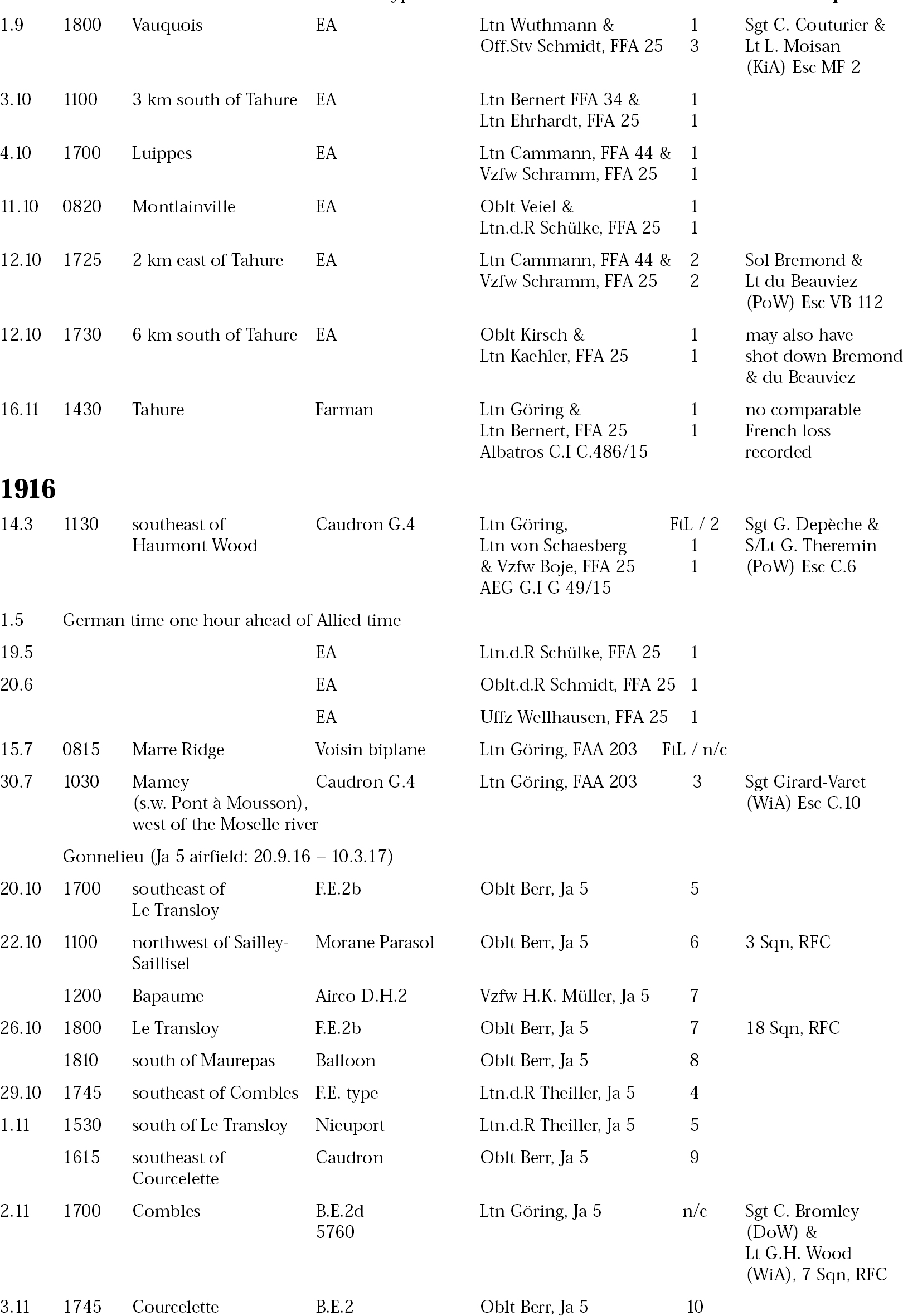

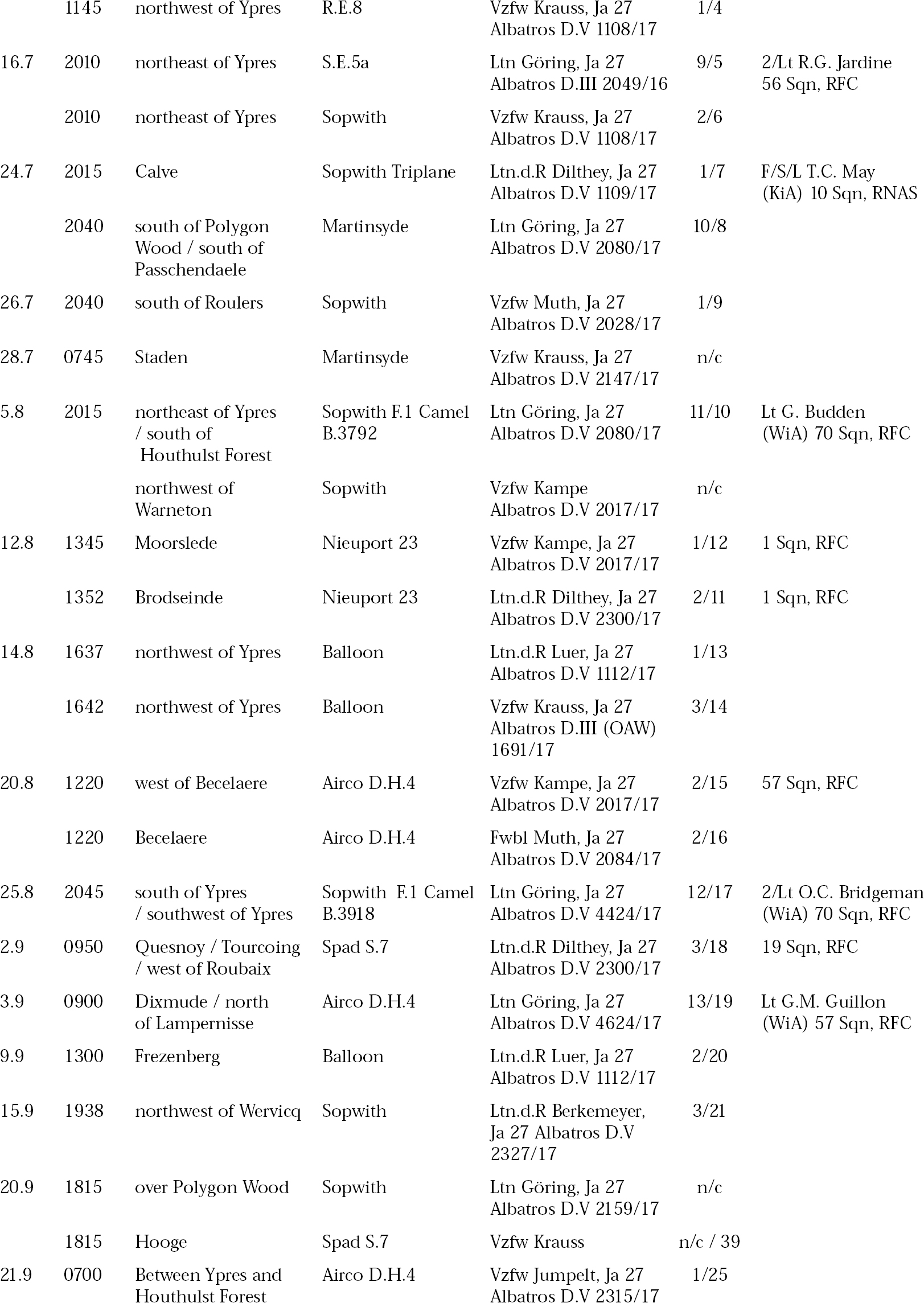
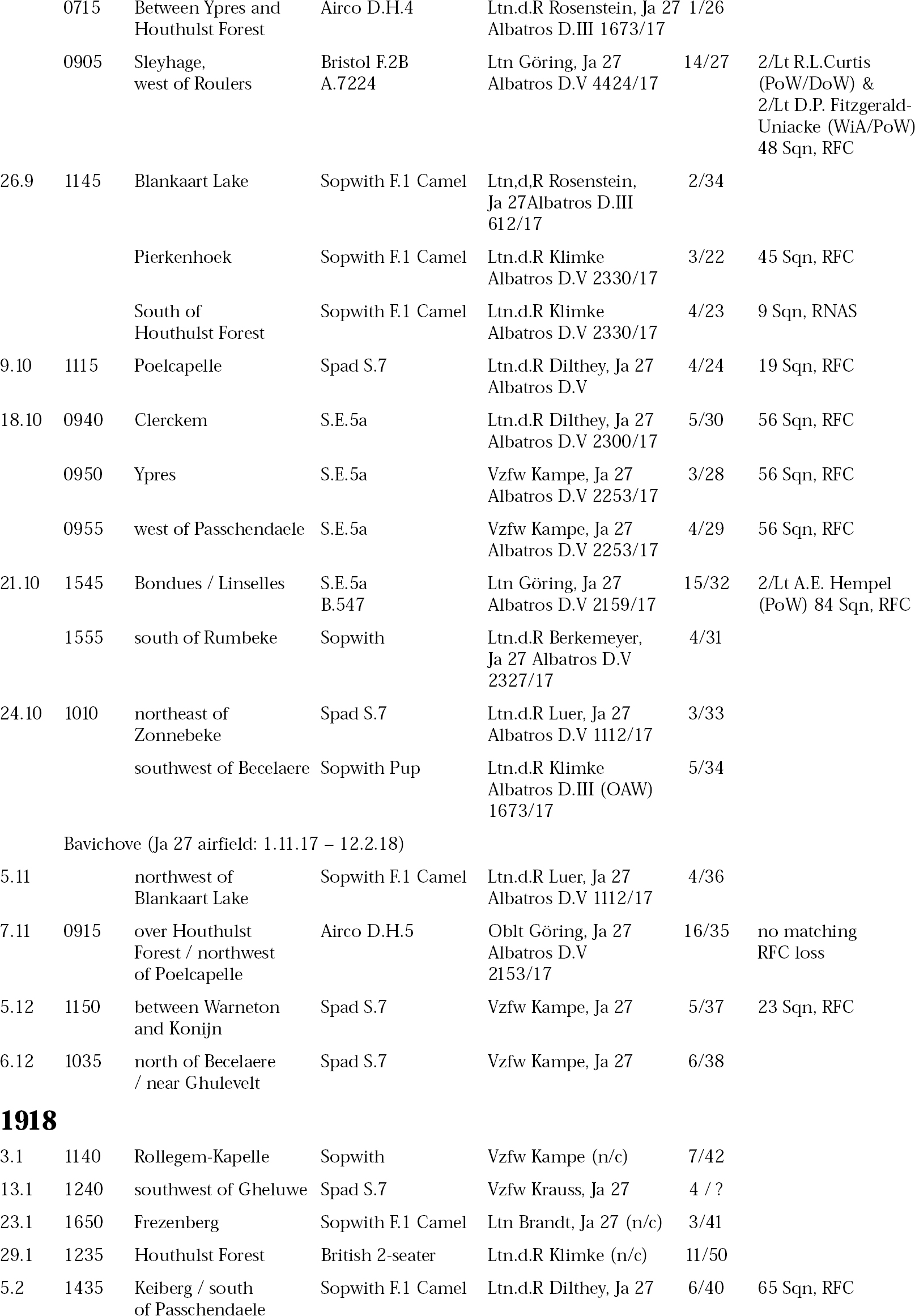
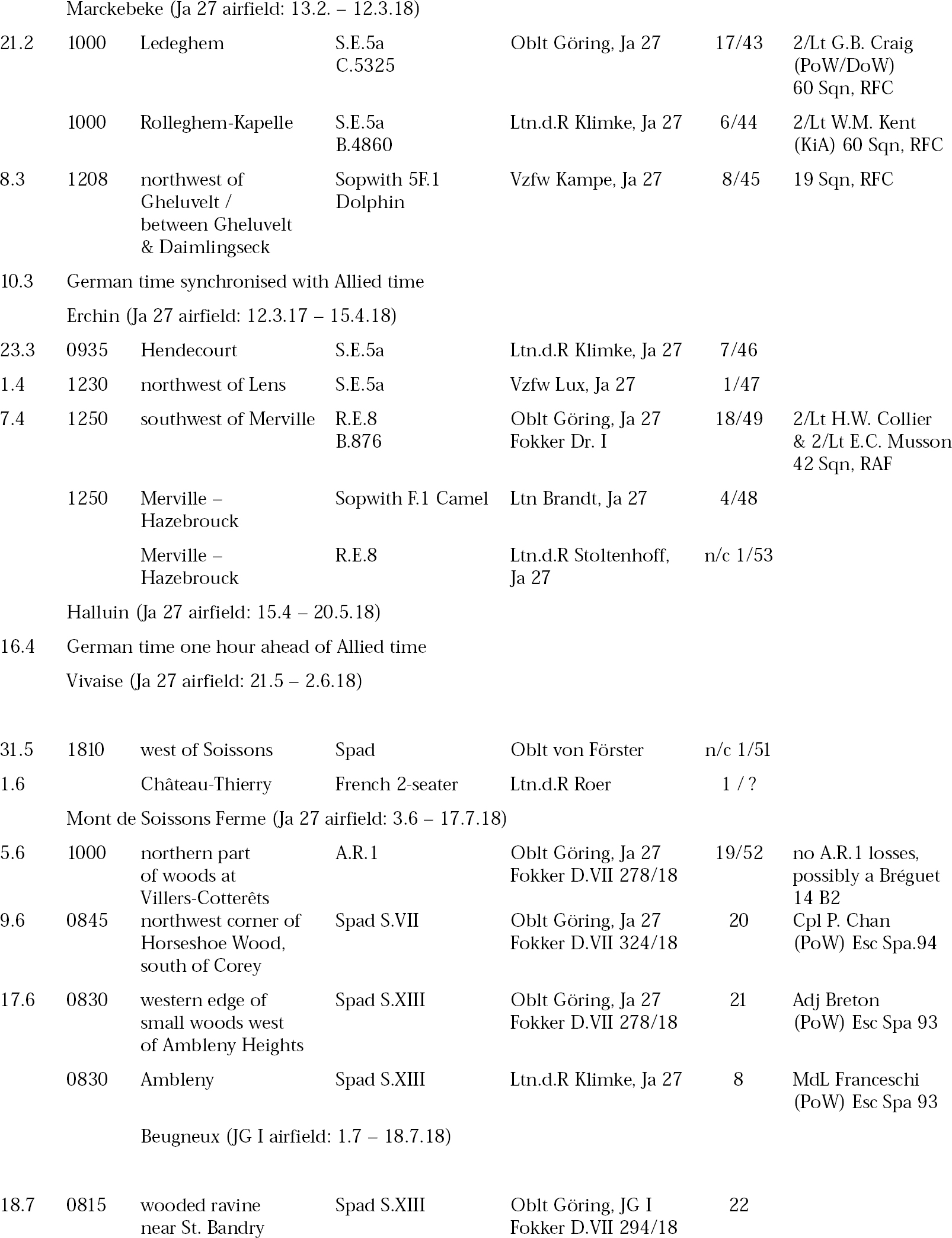
What was Hermann Grings Final Tally?
Officially, Hermann Gring was credited with shooting or forcing down twenty-two enemy aircraft. But, as pointed out in this book, some of his victory claims were questionable. Further, accounts by his contemporaries, Bruno Loerzer and Rudolf Nebel as cited in this book, challenge the overall veracity of German fighter claims. Together, these factors add weight to the question: How many aircraft did Gring truly shoot or force down?
A case by case examination shows that, given the method of awarding credit at the times of Grings twenty-two victories, at best he accounted for eighteen or nineteen enemy aircraft between 16 November 1915 and 18 July 1918. Based on the research used in this book, the author contends that Grings claims can be rated as follows:
| No. 1 | 16 November 1915: Doubtful due to the lack of a corresponding French loss. |
| No. 2 | 14 March 1916: Definitely, as proven by the trophies of the encounter: the aircraft and crew. |
| No. 3 | 30 July 1916: Very likely, given the circumstances of the Escadrille C. 10 loss. |
| No. 4 | 23 April 1917: Almost certainly, given the circumstances of the 18 Squadron, RFC loss. |
| No. 5 | 28 April 1917: Very likely, given the circumstances of the 43 Squadron, RFC loss. |
| No. 6 | 29 April 1917: Almost certainly, given the circumstances of the 6 Squadron, RNAS loss. |
| No. 7 | 10 May 1917: Almost certainly, given the circumstances of the 55 Squadron, RFC loss. |
| No. 8 | 8 June 1917: Almost certainly, given the circumstances of the 1 Squadron, RFC loss. |
| No. 9 | 16 July 1917: Almost certainly, given the circumstances of the 56 Squadron, RFC loss. |
| No. 10 | 24 July 1917: Doubtful due to the lack of a corresponding British loss. |
| No. 11 | 5 August 1917: Almost certainly, given the circumstances of the 70 Squadron, RFC loss. |
| No. 12 | 25 August 1917: Most likely, given the circumstances of the 70 Squadron, RFC loss. |
| No. 13 | 3 September 1917: Possibly, given the circumstances of the 57 Squadron, RFC casualty. |
| No. 14 | 21 September 1917: Almost certainly, given the circumstances of the 48 Squadron, RFC loss. |
| No. 15 | 21 October 1917: Almost certainly, given the circumstances of the 84 Squadron, RFC loss. |
| No. 16 | 7 November 1917: Highly unlikely in view of weather conditions, the brief engagement noted and lack of 32 Squadron, RFC losses. |
| No. 17 | 21 February 1918: Almost certainly, given the circumstances of the 60 Squadron, RFC loss. |
| No. 18 | 7 April 1918: Almost certainly, given the circumstances of the 42 Squadron, RFC casualty. |
| No. 19 | 5 June 1918: Possible, but, due to circumstances, very difficult to confirm or deny credit. |
| No. 20 | 9 June 1918: Almost certainly, given the circumstances of the Escadrille Spa 94 loss. |
| No. 21 | 17 June 1918: Very likely, given the circumstances of the Escadrille Spa 93 loss. |
| No. 22 | 18 July 1918: Very possible, but, due to circumstances, difficult to confirm or deny credit. |
In view of the evidence currently at hand, Grings first, tenth and sixteenth victory claims seem least likely to have been graced by success and his nineteenth was tenuous at best.
A number of German fighter pilots with higher and more credible victory scores such as Oberleutnant Harald Auffarth (twenty-nine), Leutnant Gustav Drr (thirty-five), Leutnant Hermann Frommherz (thirty-two) and Leutnant Georg von Hantelmann (twenty-five) did not attain the Orden Pour le Mrite or Grings level of command success. But perhaps they also lacked the burning and amoral ambition, helpful personal contacts and just plain luck that marked Hermann Grings early pathway through life.
A PPENDIX II
C ASUALTIES IN U NITS UNDER H ERMANN G RINGS C OMMAND
Authors note: The increasing ferocity of World War I air operations as the war continued and the effects of Germanys diminishing resources can be seen in the losses of men and aircraft suffered by Jagdstaffel 27 and the four Staffeln of Jagdgeschwader I when they were commanded by Hermann Gring. The following casualty list was compiled from the Jasta 27 war diary abstract, the JG I war diary in Karl Bodenschatzs book Jagd in Fanderns Himmel (1935), Kommandeur der Flieger bi-monthly, weekly and other reports, resources from the former Reichsarchiv, and research material provided by the late Dr. Gustav Bock. Dates are stated in the German numerical style (day, month) and times are expressed in military time. Fates of the airmen are indicated by the abbreviations: DoW = Died of Wounds; FtL = Forced to Land; IiC = Injured in Crash; KiA = Killed in Action; KiC = Killed in Crash; PoW = Prisoner of War; WiA = Wounded in Action; blank = the pilot was uninjured and returned to duty. Some (but not all) German aircraft captured or recovered for intelligence purposes were allocated G identification numbers (Ref: Franks, Bailey & Duiven, The Jasta Pilots, pp. 335-344); they are listed when known.

